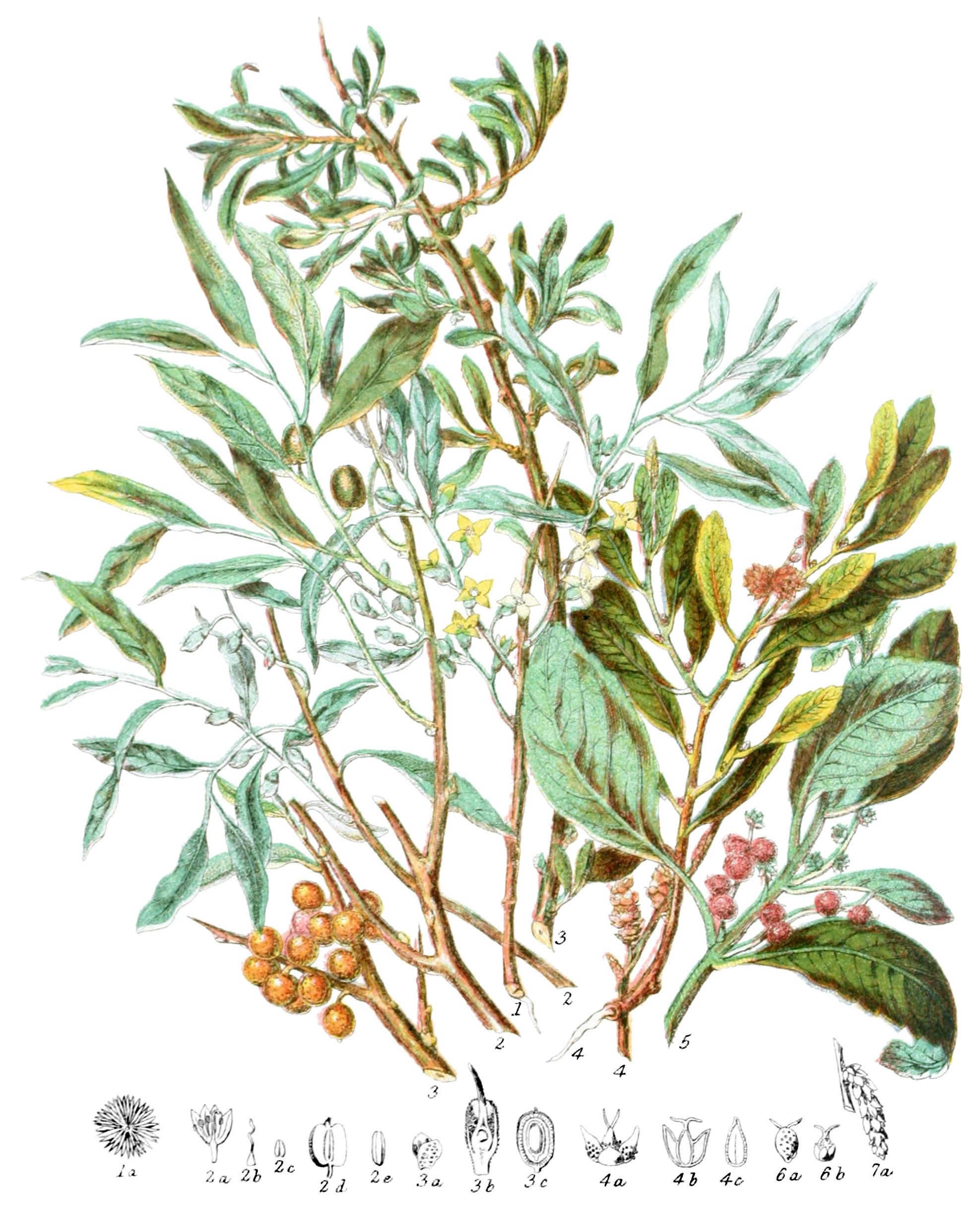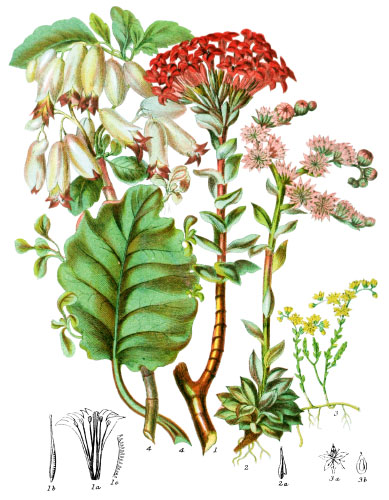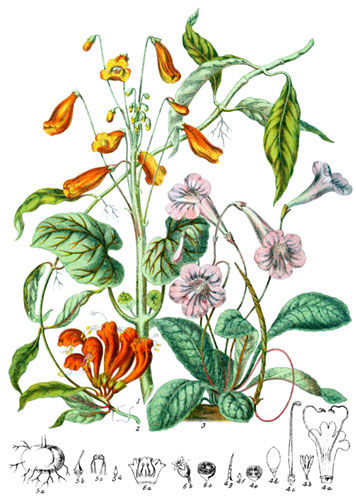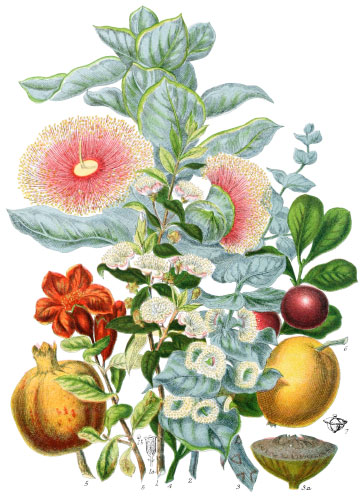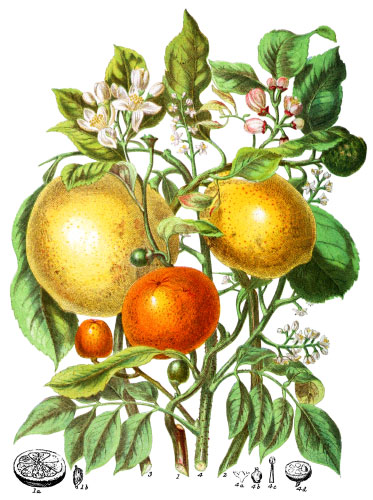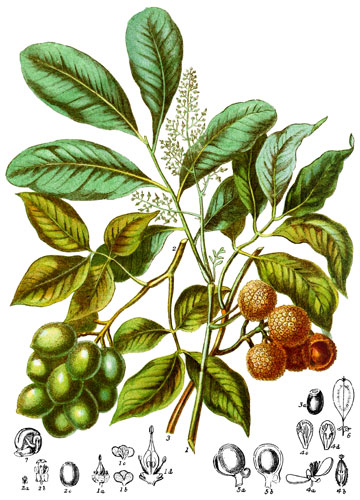Key characteristics
Small trees and shrubs, usually covered with resinous glands or dots and minute scales. The leaves are alternate or opposite, simple, and sometimes notched at the edges, with or without stipules. The flowers grow from the base of the leaf-stalks, or in catkins or panicles. The stamens and pistils are often in separate flowers, united in Elæagnus. The stamen flowers of the catkins are placed each within a scale; the stamens are from two to eight; the anthers two to four-celled, opening lengthwise. The calyx of the pistil flowers and the perfect flowers is free, tubular, with a fleshy disk which often closes it; persistent; the upper part two to five-toothed. The ovary is free, simple, one-celled, sometimes surrounded by scales, surmounted by one or two stigmas, simple oval-shaped, or dilated, glandular. The fruit is a drupe, covered with waxy secretions, or crustaceous, and enclosed within the succulent calyx or scales. The seed is solitary, and contains very little albumen.
This Tribe has affinity with the Nettle Tribe. Myrica forms a link with Amentaceæ.
Aromatic, tonic, and astringent properties prevail in these shrubs.
Select plants in this order
Not all plants listed are illustrated and not all plants illustrated are listed.
- Elæagnus is a genus with slender pale brown branches and silvery leaves. Although selected as the type of this Order, it has not the character of separate stamens and pistil, the flowers being complete in that respect, but without a regular corolla of petals; the single calyx forms the flower, and is more brightly coloured within; four stamens are fixed on it. The whole of the tree, except the older branches, is covered with scales and glands of a silvery hue; the minute scales, when viewed under the microscope, display a beautiful star-like form, reminding of another branch of creation—the scales of fishes. As the leaves become older they acquire a duller browner hue.
- E. angustifolia (1) is the European species, and has been for more than two centuries admitted into shrubberies, where the delicate foliage contrasts well with the glossy leaves of evergreen shrubs. The flowers, as well as those of other species, are agreeably fragrant, and contain a honey considered good in fever. It was known to Pliny, who called it the Wild Olive. In the low, humid soil about Constantinople the trees grow abundantly; the fruit is sold in the markets, a large supply being brought from Scutari and other places on the Asiatic shore; it is of a dry, mealy, saccharine substance, sweet, and pleasant to the taste.
- E. argentea (2) was introduced from North America; the solitary nodding flowers come forth late in the summer; in its native woods the contrast of its silvery leaves with the rich brilliant hues of autumn foliage in that country is still more striking than in our plantations.
- The fruit of E. orientalis is eaten in Persia, that of E. arborea in Nepal.
- Hippophae (3)* grows on sandy cliffs on the east coast of England, above the sea; the upper surface of the leaves is covered with minute dots, without scales; the lower is clothed with silvery scales. In Sweden the berries are eaten by the peasants, as also in the south of France, where the trees grow plentifully; they are, however extremely acid, and must be prepared with sugar to render them palatable. It is said to be a good sauce for fish, and the fishermen on the Gulf of Bothnia collect and preserve large quantities of the fruit. The whole plant yields a yellow dye.
- Myrica is a genus preferring moist situations; M. gale (4) is a native of swampy bogs and marshes in Wales and other mountainous parts of Britain. An essential oil exists in small pores of resinous substance, which gives a pleasing fragrance to the leaves and berries. A bitter principle is also contained in the leaves, used by some of the poor in northern countries as a substitute for hops. The catkins, when boiled, yield a waxy substance, from which candles might be made; it is also serviceable in tanning skins; both in Sweden and in Wales it is employed to dye wool yellow. In the Hebrides and other Scotch isles medicinal use is made of the leaves; and in the marshes of Cambridgeshire the branches are made into brooms. The flowering branches grow from terminal buds of the former year, which wither at the end when the fruit is completed; new branches come from the side buds—thus a thick, short brush is formed, seldom more than four feet high.
- M. cerifera supplies was in North America, and is called candle-berry bush.
- M. javanica (6)† is a representative of the genus in hot regions.
- Comptonia asplenifolia (7)‡ is tonic and astringent, used as medicine in the United States.
Locations
This Tribe is dispersed throughout all the northern hemisphere, the tropics of South America, India, and the Cape of Good Hope. It is less frequent south of the equator, and very few species are natives of Europe.
Legend
- Elæagnus angustifolia, Narrow-leaved Oleaster. South Europe.
- Scale, magnified.
- Elæagnus argentea, Silvery Oleaster. North America.
- Flower, open.
- Pistil.
- Anther.
- Fruit.
- Seed.
- Hippophae‡ rhamnoides, Sea Buck-thorn. Cliffs, Britain.
- Stamen Flower.
- Pistil and Ovary.
- Section of Fruit.
- Myrica gale, Sweet Gale. Britain.
- Pistil Flower.
- Section.
- Seed-vessel.
- Myrica javanica. Java.
-
- Pistil Flower and Scale of M. cerifera.
- Flower without Scale.
-
- Catkin of Comptonia.
- *Hippophae was spelled “Hippophaes” in the original description.
- †M. javanica was referenced as 6 instead of 5 in the original description.
- ‡7 was mentioned in the original description but only 7a was illustrated.
Explore more
Posters
Decorate your walls with colorful detailed posters based on Elizabeth Twining’s beautiful two-volume set from 1868.
Puzzles
Challenge yourself or someone else to assemble a puzzle of all 160 botanical illustrations.
